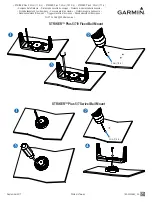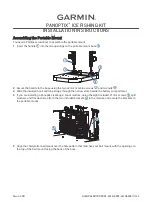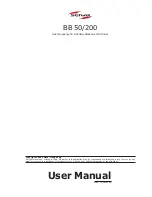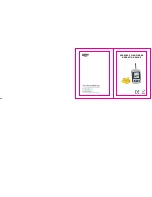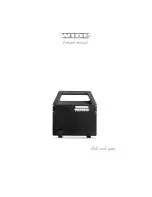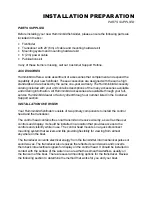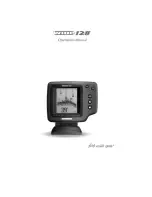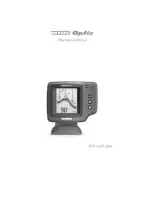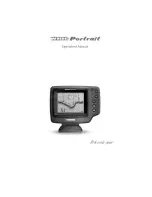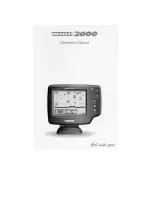
69
Glossary
Sonar Terms:
Beam (Sonar Beam)
The wide, cone-shaped projection of sound waves formed as sound
travels underwater. See
Cone Angle
.
Bottom Contour
The profile of the bottom graphed to the display as the depth changes.
Bottom Hardness
The density (or composition) of the bottom. Varying levels of hardness
can be determined by interpreting the “thickness“ of the main sonar return. Hard returns
appear thin and black, softer returns appear thicker and less black. It is important to note
that a sonar return from a sloping bottom can have the appearance of a softer bottom.
Cavitation
The effect of air bubbles created as the propeller rotates and the boat moves
through the water.
Cone Angle
The angular measurement of the sonar beam at a specific dB down point
(i.e. -10 dB). See
dB Down Point
.
Dead Zone
The area of the sonar beam that receives the sonar signal after the main
bottom return. Fish and other objects close to the bottom that fall within the dead zone will
probably not be visible in the sonar beam. Precision sonar beams, such as the Humminbird®
20° beam, have a smaller dead zone than wider sonar beams.
Decibel
The measurement for sound pressure level, or “intensity”of the sonar return. See
dB Down Poin
t
.
dB Down Point
The standard decibel level at which the sonar cone angle is measured,
and is written as “@ -10 dB” or “@ -3 dB“. Measurements at smaller down points (bigger
negative numbers) indicate that the less intensive sonar signals are being used for the
measurement.
Display, FSTN (Film Super-Twist Nematic)
FSTN is a monochrome display technology
characterized by black, high-contrast pixels. All monochrome fixed mount Humminbird®
products use FSTN technology.
Frequency
A measure of the number of sound wave cycles per second of a sound impulse
transmitted underwater. A typical frequency for fishfinders is 200 kHz, which offers a good
balance of performance under many conditions. Lower frequencies, such as 50 kHz, are
capable of penetrating to greater depths, but with less resolution. Higher frequencies, such
as 455 kHz, offer greater resolution, but are limited in depth performance. Humminbird®
uses a variety of frequencies that are optimized for specific applications.
Glossary





















